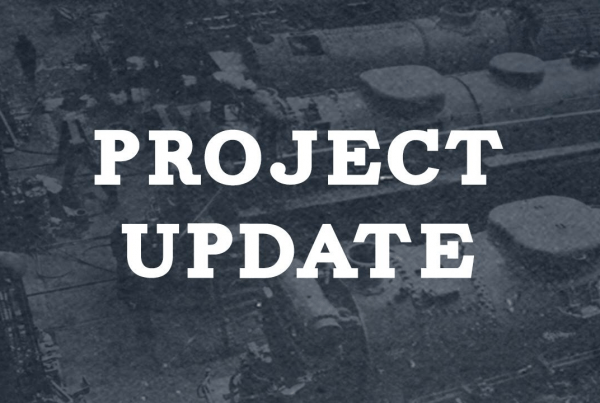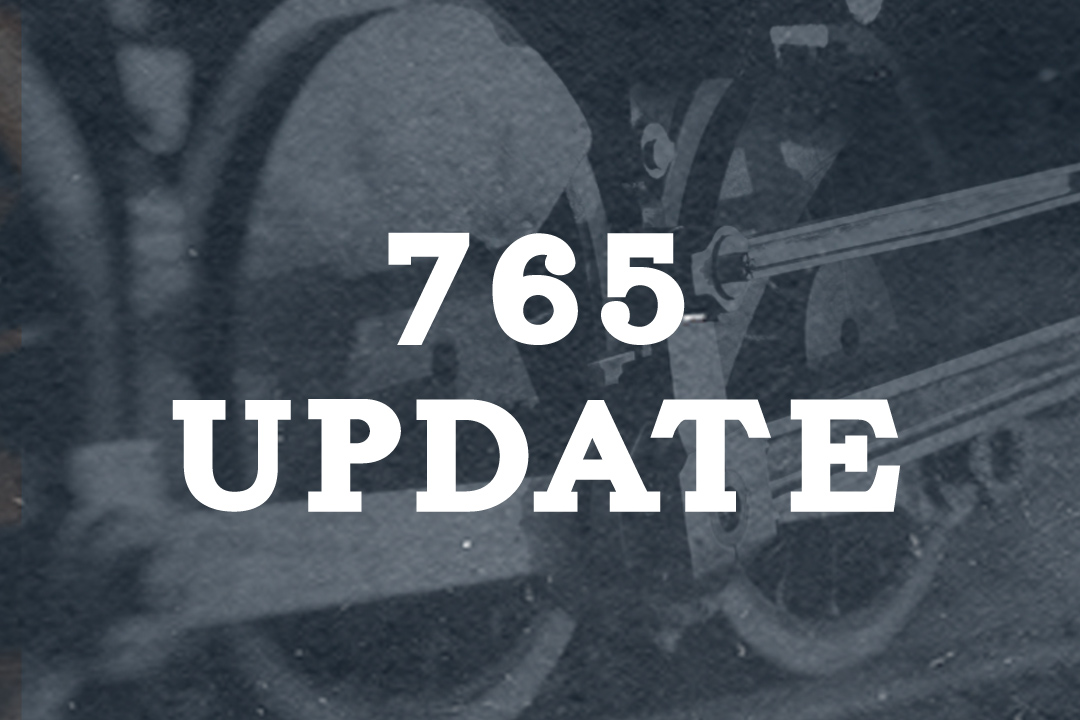Submitted by Tom Nitza.
Friday was spent working on the Plymouth’s wiring. We now have “two speed” headlights, and it’s amazing how bright they are compared with the way they were before. Holes were cut in the fireman’s side of the electrical cabinet for the hour meters. At that point I decided that I might as well paint that end of the cabinet. The old paint was stripped, the many unused bolt holes were filled with bondo, and the cabinet was primed.
The official color of the electrical cabinet is now Do It Best Stone Grey Gloss Enamel. By next weekend the paint will be dry and the hour meters will be mounted. They are wired into the switch that turns on power to the engine’s fuel pumps, one for each engine. This way we will capture the hours each engine runs.
Saturday was busy with the cab sub floor being prepared for paint. This is basically a steel plate welded to the frame. The fuel tank bolts to this plate. The old wood floor had previously been removed. The area was needle gunned and then vacuumed. We also took out the plywood wall panel that was under the fireman’s window. That area and the subfloor have now been primed.
In our continuing effort to upgrade things, we took a look at the wiring to the starter on the #1 engine. It appears to be the original wiring and the condition of the insulation was poor. Ultimately it will be replaced but, for the moment, we’re hoping to get a little more life out of it since there are many other projects underway. A wooden clamp was removed — amazingly the bolts came loose without effort — and the wires were moved so that we could wrap them with rubber insulating material. That was then covered with electrical tape. Everything is back in position. One item of interest is that the wires leading from the batteries to the starters is the same size as the traction motor leads, which is easily twice the size of the cables you would expect.
Helping on these efforts were John and D. J.
The next scheduled work days are Friday March 10th and Saturday March 11th.
On Friday Dave and I plan to remove one of the fuel injectors on the #2 engine. We’ll take it to Fort Wayne diesel for a consultation. They’ll either say “we can handle that” or “you want to do what?”. Hopefully they’ll be able to rebuild the injectors. If that’s the case the remaining ones will be removed and taken to Fort Wayne diesel. That should solve the problem with fuel diluting the oil.
At some point we’ll do a compression test just to confirm that we don’t have any other problems. Dave has the gauge but we need to find or make an adapter that fits the engine. Once the #2 engine is completed, we plan on doing the same for the other engine — there’s no fuel in the oil, but we might as well get both engines running as well as we can.
Other potential projects for next weekend:
• Installing the floor on the fireman’s side
• Removing more old unused wiring and piping
• Engine compartment cleaning
• Working on the electrical cabinet doors
Dave and John spent Saturday afternoon making a rolling platform for our large industrial vacuum. We all continue to be amazed at how useful wheels are on a concrete floor.
Finally, Joe Knapke spent some time preparing the electrical service for the machine shop. We had installed an under floor conduit prior to pouring the concrete floor in anticipation of this upgrade.


